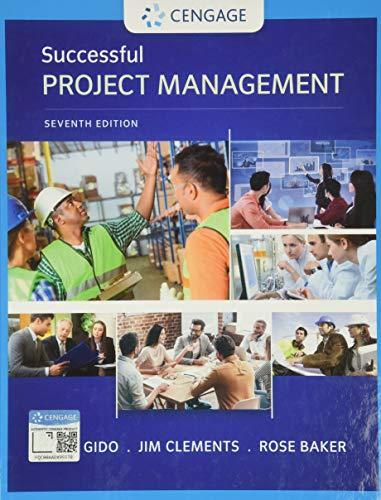Question
Chapter 2: Managerial Decision-Making Decisions, Decisions Amber Liu is an entrepreneur who started an online company selling luxury headphones. She loves exploring different musical genres,
Chapter 2: Managerial Decision-Making
Decisions, Decisions
Amber Liu is an entrepreneur who started an online company selling luxury headphones. She loves exploring different musical genres, which sparked an interest in doing headphone research. She discovered that the world of headphones was obtuse, with numerous brands advertising other incomprehensible jargon, innumerable types with different features and drawbacks, and was complicated by the fact that the audio source and power supply made a significant difference to sound fidelity in her experience. She decided to do something about it and make a business selling high-end headphones that simplified the experience for customers. Her nascent website featured a questionnaire that determined the usage of the headphones and educated customers about what they should be looking for.
One feature of the website was an "ask me anything" feature which would connect her customers to her directly so they could ask questions about headphones. Amber's knowledge and sales skills meant that she could convert the conversations into a sale 10% of the time, as opposed to the average visitor who made a purchase less than 2% of the time. As the website's popularity grew, Amber had to enlist her brother Craig (a music connoisseur in his own right) to help out.
Sales crept up, and reviews about their website were positive. However, Amber and Craig could no longer keep up. They needed help and they hired a young audio engineering student and his friend to answer questions on an alternating-shift basis. Between Amber, Craig, and the 2 students, the website had someone monitoring customer chat 24/7.
This wasn't enough. At peak times there would be a deluge of customer inquiries and Amber needed more skilled people. Further, she no longer had the physical space in her parent's basement suite to accommodate the business. It was time for the business to move.
Amber did a little research and came up with a few alternatives. She's sure that more alternatives are available, but she has had little time to think since her business has been taking off.
First, she could rent office space out in the suburbs. The office she found was far away from her home and would create a significant commute for her, her brother, and the employees. However, the space was cheap, parking plentiful, and there was a lot of space for growth because it could comfortably fit 30 people.
Second, she found a chic downtown office. It was nearby her home and would surely impress visitors, including potential investors who she is considering soliciting for money to expand the business. However, it is expensive and can only accommodate 15 people, leaving little room for growth.
Third, she could have all her employees working from home and provide an allowance for equipment. This would be the cheapest by far as she would not need to rent any additional space. She would also be able to hire people from outside her city because it's not necessary that they are physically on-site. However, she is concerned about not being able to monitor employees' job performance or develop a collaborative culture at her business.
After thinking about all this, Amber is struggling to come to a decision. "What should I do? This will certainly affect my business for years to come."
Questions
You will be following some of the steps that a decision-maker should go through when they have to make a decision. More information about these steps can be found in Sections 2.1-2.3.
- Generate multiple alternatives. What possible alternatives for locations does Amber have? Are there more alternatives besides what was listed?
- Analyzing Alternatives.
- Generate criteria. What should matter to Amber? You may want to assign a weight to each of the criteria. For example, if you believe the cost matters a lot, but the distance from home only matters somewhat, you may want to assign a weight out of 10 to each one.
- Discuss the pros and cons of each of the alternatives you have generated against the criteria you have created.
- Select an Alternative. What recommendation do you have for Amber? You may make it by assigning a score for each of the alternatives under each of the criteria, and multiplying it by the weight, then adding up the totals for each alternative.
- Justify your answer.
Step by Step Solution
There are 3 Steps involved in it
Step: 1

Get Instant Access to Expert-Tailored Solutions
See step-by-step solutions with expert insights and AI powered tools for academic success
Step: 2

Step: 3

Ace Your Homework with AI
Get the answers you need in no time with our AI-driven, step-by-step assistance
Get Started


